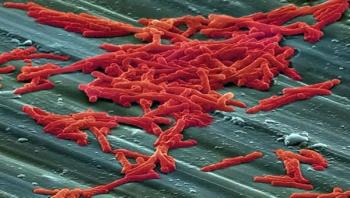
News




Robots are capable of all sorts of tasks to help better treat cancer: They connect oncologists to patients remotely, make incisions, staple them shut, deliver "nano" therapies--and they clean rooms. New research from Penn Medicine infection control specialists found that ultraviolet (UV) robots helped reduce the rates transmission of the common bacterial infection known as Clostridium difficile among cancer inpatients - mostly blood cancer patients, a group more vulnerable to hospital-acquired infections - by 25 percent. The interventions also saved about $150,000 in annual direct medical costs.











aureus (MRSA) that loiter on surfaces even after patient rooms have been cleaned and can cause new, sometimes-deadly infections. But a new study from Duke Medicine has found that using a combination of chemicals and UV light to clean patient rooms cut transmission of four major superbugs by a cumulative 30 percent among a specific group of patients -- those who stay overnight in a room where someone with a known positive culture or infection of a drug-resistant organism had previously been treated.

New research may revolutionize the slow, cumbersome and expensive process of detecting the antibodies that can help with the diagnosis of infectious and auto-immune diseases such as rheumatoid arthritis and HIV. An international team of researchers have designed and synthetized a nanometer-scale DNA "machine" whose customized modifications enable it to recognize a specific target antibody. Their new approach, which they described this month in Angewandte Chemie, promises to support the development of rapid, low-cost antibody detection at the point-of-care, eliminating the treatment initiation delays and increasing healthcare costs associated with current techniques.




New chip-based optical sensing technologies developed by researchers at UC Santa Cruz and Brigham Young University enable the rapid detection and identification of multiple biomarkers. In a paper published October 5 in Proceedings of the National Academy of Sciences, researchers describe a novel method to perform diagnostic assays for multiple strains of flu virus on a small, dedicated chip.






U.S. hospitals recorded nearly 58,000 work-related injuries and illnesses in 2013, amounting to 6.4 work-related injuries and illnesses for every 100 full-time employees -- almost twice as high as the overall rate for private industry. In June, the Occupational Safety and Health Administration (OSHA) announced it was targeting some of the most common causes of workplace injury and illness in the healthcare industry, and is expanding its use of enforcement resources in hospitals and nursing homes to focus on patient or resident handling; bloodborne pathogens; workplace violence; tuberculosis, and slips, trips and falls.


